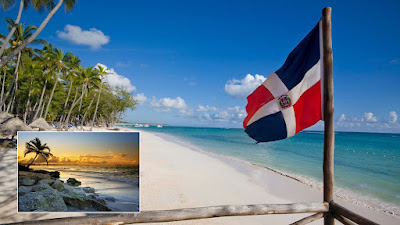Dominican Republic Offers Balanced Travel Costs, Ranking 47th Globally in Tourism Spending with Diverse Experiences Across the Caribbean\
A March 2025 study from financial comparison platform reveals that the Dominican Republic ranks 47th in the world in terms of average daily tourism spending, with travelers shelling out approximately US$132 per day. This expenditure places the country in a moderate to high pricing tier on the global tourism cost index—making it more expensive than regional favorites like Mexico, Panama, and Jamaica, yet considerably more affordable than luxury-heavy Caribbean nations such as Barbados and Antigua & Barbuda.
This figure reflects the average amount a tourist spends each day on essential components of travel: lodging, food, and local transportation. It does not include international flight costs, focusing instead on the day-to-day costs once a traveler is already in the destination. As such, the report provides a focused lens on how affordable or costly it is to enjoy a vacation inside each country.
A Caribbean Destination of Balance
When compared to its regional neighbors, the Dominican Republic stands out as a destination that strikes a financial balance between lavish Caribbean escapes and cost-conscious tropical retreats. According to the report, Antigua and Barbuda leads the Caribbean for the highest tourism costs, with visitors spending an average of US$311 per day. Close behind are Barbados at US$331 and St. Kitts and Nevis at US$272.
In contrast, the Dominican Republic’s US$132 daily rate reflects its diverse tourism offerings. Areas such as Punta Cana, known for luxury all-inclusive resorts and white-sand beaches, cater to high-spending visitors. Meanwhile, regions like Jarabacoa, Pedernales, and parts of the Samaná Peninsula offer nature-based, cultural, and eco-tourism experiences that are significantly more affordable, appealing to budget travelers and backpackers.
This range of options across price points makes the country appealing to a wide variety of tourists, from honeymooners and resort-goers to adventure travelers and digital nomads seeking affordability with island charm.
Global Tourism Costs: Who’s Spending the Most and Least?
On a global scale, the report identifies Switzerland (US$251/day), the United States (US$249/day), and the United Arab Emirates (US$221/day) as the most expensive countries for daily tourist spending. These high prices are influenced by elevated standards of living, higher service wages, extensive infrastructure, and premium-quality services across hospitality, dining, and local transport.
At the other end of the spectrum, Laos is deemed the most affordable destination, with average daily costs for travelers at just US$15. Other low-cost travel hotspots include Kazakhstan (US$19) and Rwanda (US$21), each offering unique travel experiences with a significantly lower price tag.
This wide gap in global travel costs is shaped by a variety of factors, such as:
- Currency strength
- Local wage levels
- Government taxes and tourism policies
- Availability of budget accommodations
- Public versus private transportation
Understanding these cost dynamics helps travelers budget more effectively and also gives tourism boards insight into how to position their countries in the international market.
How the Dominican Republic Stands Out
Despite ranking 47th globally, the Dominican Republic remains one of the most accessible Caribbean destinations for international visitors, particularly from North America and Europe. Thanks to direct air connections, competitive accommodation pricing, and a strong focus on hospitality, the country continues to enjoy strong tourism numbers, particularly in the post-pandemic era.
Additionally, the Dominican government has actively supported tourism development through infrastructure upgrades, including road improvements, airport expansions, and hospitality training programs, ensuring both budget and luxury travelers have smooth and safe experiences.
For example, Punta Cana International Airport, the busiest in the country, has undergone several expansions to accommodate increasing international demand. Meanwhile, new eco-resorts in regions like Barahona and Bahía de las Águilas are promoting sustainable travel and economic development outside the well-trodden resort circuits.
Tourism Strategy and Spending: The Bigger Picture
As the HelloSafe report outlines, spending patterns are essential indicators of how a country is perceived and experienced by tourists. High daily costs can often signal upscale offerings, exclusivity, or logistical challenges, while moderate costs may suggest value-driven travel opportunities and greater accessibility.
For the Dominican Republic, maintaining this mid-range pricing position is advantageous. It allows the country to attract both high-end travelers and cost-conscious tourists, without pricing itself out of reach or compromising the quality of experiences.
With ongoing investments in green tourism, public-private tourism partnerships, and community-based projects, the Dominican Republic is carving a niche as a destination where authentic culture meets affordability. Its ability to cater to a broad spectrum of travelers while maintaining competitive pricing could make it a standout model for other countries in the region.
In the competitive landscape of global tourism, the Dominican Republic’s US$132 average daily travel cost offers a well-rounded value proposition. Neither the most expensive nor the cheapest, the country presents a dynamic and diverse tourism ecosystem—from luxury beach resorts to mountain eco-lodges—that delivers meaningful experiences at accessible prices.
Dominican Republic has 47th-ranked spending in the globe in tourism, with each day’s average spending of US\$132, and this is greater than Mexico, Jamaica, and Panama, as it has the blend of deluxe resorts and expanding mid-range traveling choices. This adjusted pricing reflects its greater popularity and improved tourism infrastructure across several areas.
As travelers continue to seek destinations that combine value, beauty, and culture, the Dominican Republic stands as a prime choice in the Caribbean, offering everything from palm-lined beaches to colonial heritage and verdant national parks—without the eye-watering price tag.
Tags: Caribbean Destination of Balance, Barbados Antigua and Barbuda, Dominican Republic
